A Definitive Guide to Social Media App Development
11 Jan 21 

How many social networking profiles do you have?
How much time do you spend on social media every day?
A lot, right?
Social media networks have changed the way the world interacts and connects.
Initially developed with an intention to build connections with like-minded people, today, social media apps have also become powerful marketing tools for businesses.
Are you thinking “But why create a social media app when we already have Facebook, Instagram, Twitter, YouTube, LinkedIn, and the like?”
Let me ask you a question.
If a new social networking app were to be launched tomorrow, wouldn’t you want to be a part of it?
Imagine an app that connects you to people who share a similar hobby.
Say, an app for guitar enthusiasts where guitarists worldwide post covers, share tutorials and discuss all things guitar.
If you like the guitar, even if you don’t play it, the chances are that you would want to be a part of it.
Thus with the diverse interests that people all over the world have, there is always space for a new platform.
New ideas open up new opportunities, so social media app development is here to prosper.
What is a Social Network?
Of course, you know different social networks, but what exactly is a social network?
In broad terms, social networks are any digital communication tool that allows users to share content with the public.
These communication tools were first built for computers, but today the majority of people use smartphone apps to access social media.
From sharing texts and comments to sharing photos and videos, social media has come a long way.
Today, it has become a platform for sharing interests, information, ideas, career opportunities, and a lot more.
What Are the Different Types of Social Media Apps?
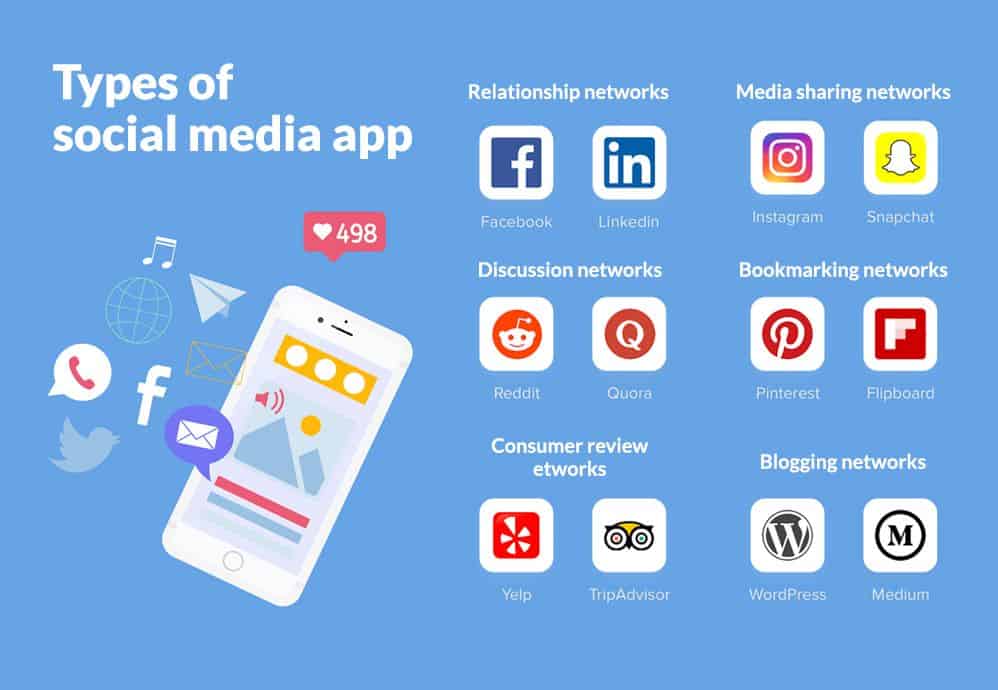
If you want to create a social networking app, then it is essential to know about the different types of social media apps.
Then only you can figure out in which category your mobile app idea belongs.
And according to that, you should define the functionality of your app, its features, your target audience, and such.
1. Relationship Networks:
These are used to connect people and build relationships. They can be personal networking(e.g. Facebook) or professional networking(e.g. LinkedIn).
2. Media Sharing Networks:
These are used to share all kinds of media files, such as photos and videos. Examples include Instagram, YouTube, Snapchat.
3. Consumer Review Networks:
These networks allow users to share reviews about products or services to help others make purchase decisions. Yelp, TripAdvisor are examples of this network.
4. Discussion Networks:
These are knowledge-sharing networks where discussions and Q&As happen through communities and forums. Examples include Quora, Reddit.
5. Blogging Networks:
Networks such as Medium, WordPress that allow users to create and publish blogs come under this.
6. Bookmarking Networks:
These networks let users discover, share, organize, and save the content of their personal preference from various online resources. Pinterest, Flipboard are examples of this network.
What Are the Current Social Media Trends?
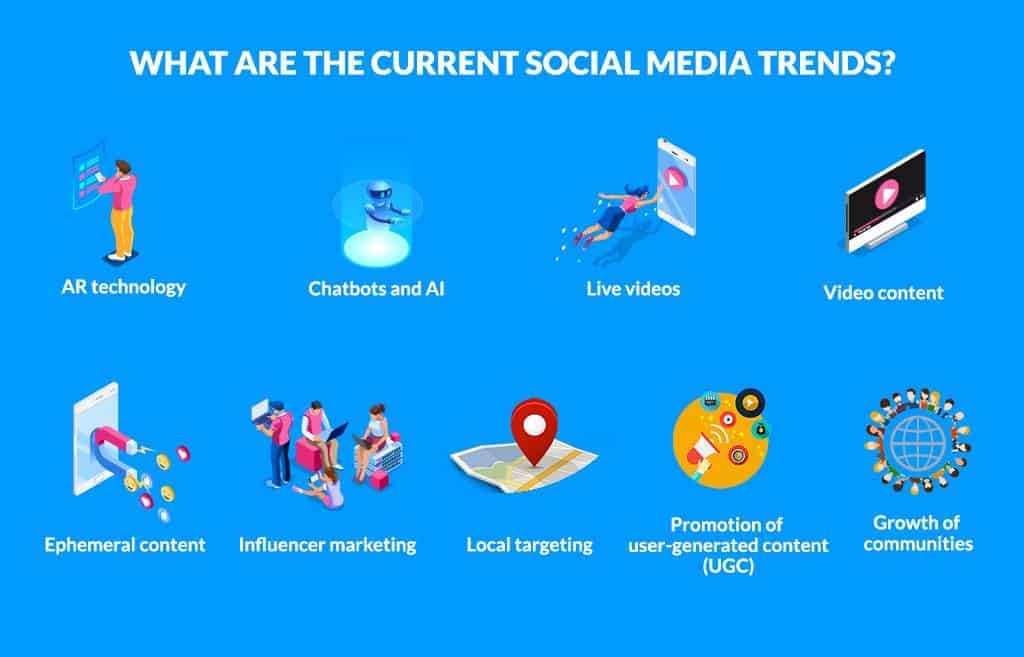
Thinking of social media app development?
Then it would be best if you watched out for the latest mobile app development trends in the market to stay in the game.
Here are the top 9 social media trends for 2021 that you should know about if you are looking to create a social media app.
1. Live Videos:
According to statistics, 82% of users prefer live videos on social media.
It is a great way to engage, attract attention, and connect.
Brands utilize live videos to improve marketing and to make important announcements.
2. Ephemeral Content:
It refers to the short duration content that stays on the air for 24 hours before disappearing, like Instagram and Facebook stories.
They give a fun, personal, and informal touch.
Brands use this to engage with the users through polls, behind the scenes, workplace tours, etc.
3. Chatbots and AI:
As a measure to improve customer service, AI-powered chatbots are widely being used.
It eliminates the need for 24*7 human assistance and empowers businesses to be able to answer customer queries at any time of the day.
4. AR Technology:
A booming trend, AR technology is used by networks such as Snapchat and Instagram to let users apply face filters.
Several e-commerce companies provide AR-powered shopping, enabling virtual-try-on for users.
5. Influencer Marketing:
A dominant trend since 2019, influencer marketing campaigns have proven to be highly effective in reaching target audiences.
In future, we will see more prominent brands collaborating with niche bloggers and micro-influencers to endorse their products.
6. Local Targeting:
Connecting to target customers through geotagging social media posts and stories is a recent trend in the industry.
It is very beneficial for local brands and small businesses as it allows them to reach out to local customers to raise brand awareness, especially during the initial stage.
7. Promotion of User Generated Content (UGC):
UGC is gaining momentum as it is a form of authentic feedback.
Several brands are promoting UGC to market their products and to provide recognition to their loyal customers.
8. Growth of Communities:
Social media communities are acting as a forum for customers to address grievances, resolve problems, carry out discussions, and get suggestions and feedback.
Such close interaction groups help to create a sense of belonging and loyalty to brands.
9. Video Content:
The age of written content and images is long past.
Video content is the new player in town.
It boosts attention and engagement and is very useful.
The latest introduction of Reels by Instagram and Shorts by YouTube are testaments to the same.
Why Go For Customized Social Media App Development?
Why should you create a mobile app that is customized for your use?
What are the benefits of a custom social media app?
If you are wondering about this, then let’s make it clear once and for all.
1. Direct Interactions:
When you have your own digital platform to interact with your customers, communication becomes direct and straightforward.
There will be no limitations to your interactions and no rules to follow.
2. Complete Access to Data:
Mainstream social media platforms don’t give access to complete customer data.
They retain some data so that businesses will go back to them for more information.
When you create a social media app of your own, you have complete freedom in terms of data which hugely helps to improve your social media marketing.
3. Creative Freedom:
Adhering to the strict regulations of existing social media platforms often means organizations have to compromise on their creative vision.
With your own app, you have full control over the app design- its look and feel, interaction approaches, and functionalities.
4. No Worries About Reach:
With so many businesses on traditional networks, the competition is high, and networks use algorithms to filter content.
So your content might not always reach the audience.
With custom social media app development, this is of no concern.
Your content will reach your audience at all times.
5. No Distractions:
You choose what your audience sees.
So you can take away unnecessary ads or irrelevant content and show only what markets your business.
Must-Have Features to Create a Social Networking App
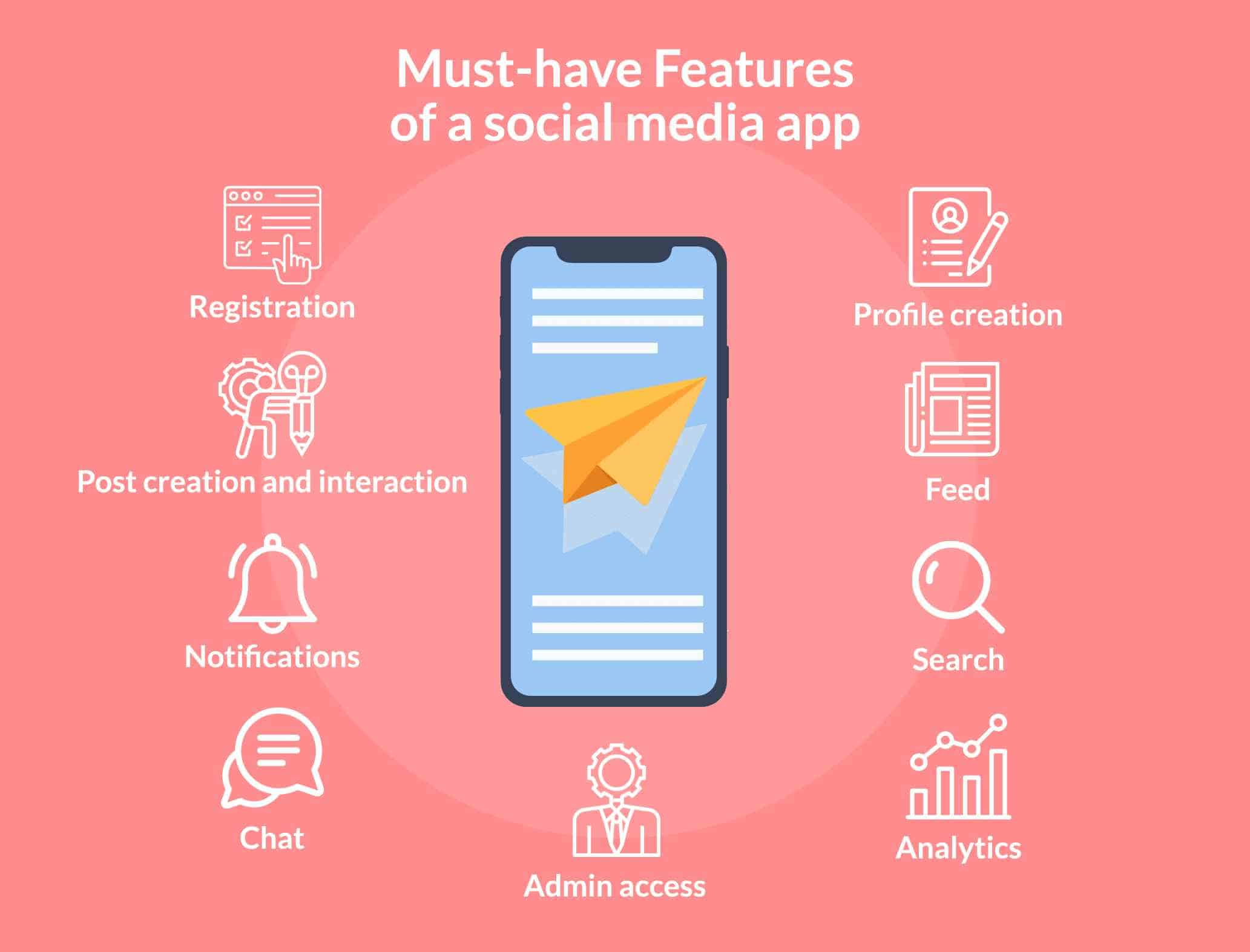
Once you have decided to venture into social media app development, you should determine what all are the features that your social media app should include.
Although it should have some unique features to stand out from other apps, there are certain basic features that every social media app should have.
1. Registration:
Users can create a new account, either through email id or using existing social media accounts in platforms like Facebook or Google+.
2. Profile creation:
Users can create a personal profile, including information about themselves and can manage and edit their profile as per their wish.
3. Post Creation and Interaction:
Users can publish posts with different content, such as text, photos or video. They can also interact with others’ posts through likes and comments.
4. Feed:
Users should be able to stay tuned with all the information regarding their friends and communities through a central space called Feed.
5. Notifications:
Users can get notifications about new events such as likes, comments, messages, follows, etc.
6. Search:
Enable users to find people, groups, or topics by implementing search for different criteria such as username, tag, location.
7. Chat:
A provision to chat with other users as well as in groups by sending texts, photos, or videos.
8. Analytics:
To provide the best user experience, it is necessary to access and analyse user navigation data using Analytics tools such as Google Analytics.
9. Admin Access:
To manage the site, carry out administrative functions, and to manage reported users, this feature is essential.
Advanced Features to Create a Social Media App
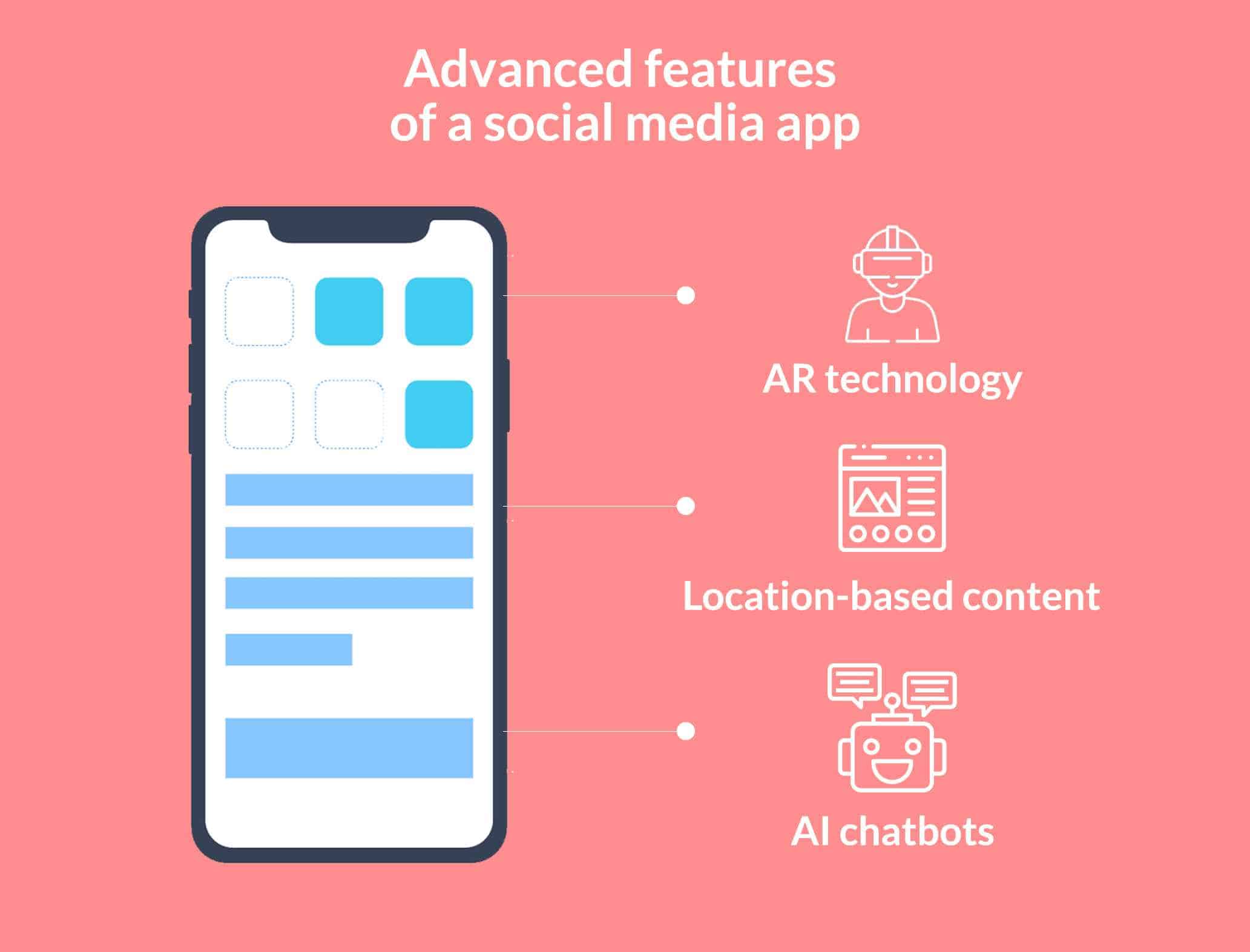
By just implementing the basic features, it could be difficult to achieve substantial engagement from users.
That requires the addition of some advanced features.
Some of the trending additional features are:
1. Location Based Content:
By analyzing the location of users and providing content accordingly can create a feeling of personalization and action from users.
2. AR Technology:
Introducing AR technology in your social media app can provide a unique user experience.
For example, a feature called ‘3D Try On’ Lenskart app and website allows users to see how a frame would look on their face.
3. AI Chatbots:
Customer service is an integral part of social media apps.
Automated chatbots that provide quick and efficient responses can help in satisfying customers.
Social Media App Architecture
Social media app architecture has a three-tier structure – mobile client, backend, and database.
The client level can be described using three key features: profiles, connections, and feeds, which we have seen in the previous sections. These features essentially define social media for users. This helps users express themselves, motivates them to use social media, and keeps them engaged.
Backend determines the scalability, efficiency and performance of your social media app. It should be based on the requirements of your social media app- how many users it will have, how much load is your app expected to deal with, etc. Some common stack technologies used in social media app development are Node.js and event-driven IO server-side JavaScript environments.
And to store all the data related to the social media environment, there is the database tier. There are several choices for databases; both SQL and NoSQL. For social media app development, SQL databases are the better option. MySQL and PostgreSQL are two recommended database choices for developing social media applications.
Five Steps of Social Media App Development
Now, how to get on with social media app development?
What are the steps to follow?
In this section, we will see what are the five steps to follow to create a social media app.
1. Define the Purpose and Audience
The first step is to define your idea thoroughly and to know the exact purpose of your social media network.
Then only can you understand the market, identify your target audience, and find out competing players.
In this step, you will get an idea about what is lacking in the current market that you can achieve with your app, what the potential users are looking for, and how you can target them to engage with your app.
2. Determine the Features and Functions
Keeping your purpose in mind, and by considering the budget and scope of the app, determine the features and functions that are to be included in it.
Think about whether you are going to implement all the basic features that we have discussed in the earlier section.
For each feature, you choose, establish how it can be executed and what functionalities it will cover.
Research on advanced features to further scale up your app.
3. Design and Development
The app design consists of creating an initial sketch to provide a basic layout, then moving towards wireframing, and finally prototyping to develop a working model of the app.
Once the model is approved by all parties involved, the final design begins to take shape.
Development runs parallel to the design process.
It also needs careful planning and strategies.
You have to decide the platforms on which you want your app to be published, that is, whether it is Android or iOS or both.
Depending on this, the technological aspects would differ.
If you are not well versed in design and development, the best option is to avail the expertise of mobile app development services.
4. Marketing
Ideally, marketing should begin when your app is in the development stage.
You have to think about how you will drive users towards downloading your app, what incentives will you offer, etc.
Once the app is launched, you have to do promotional marketing to attract users and get maximum downloads within 24 hours.
5. Analysis
After launching, you need to assess how well it is doing in the market.
This is crucial as it helps you to identify the areas of improvement and develop actionable plans for the future.
There are several analytical tools that you can use to achieve this.
Using them, you can understand how much time people spend on your app, which features they like to use, what are the user pain points, etc.
What Makes a Social Media App Successful?
There are several established social media companies in the market that it is natural to feel intimidated when you take your first step.
While it is true that the majority of the people are loyal users of these well known social media apps, it doesn’t mean that a new innovative app will fail to be noticed.
What are the factors that make a social media app successful?
1. Unique Purpose
If you take a look at all the popular apps, you can see that they all have a common factor.
What is it? They all serve a unique purpose.
For example, we turn to Instagram to share photos, login to LinkedIn to check for career opportunities.
So if your social media app is designed with a unique purpose, then it will catch user’s attention.
2. Easy Communication
People use social media apps to connect to other people.
Communication is a crucial aspect people look for whenever they discover a new social media app.
How easy is it to send messages, pictures, or videos?
If the app does not support any format or has restrictions on communication, people will not take to it.
3. Sharing with Other Platforms
In today’s times, where there are several different apps, and people have profiles on most of these apps, a provision for sharing content from one platform to another is essential.
People would want to share their Facebook post on Instagram or YouTube videos on Twitter.
It makes things easy for them and helps them build popularity.
4. Changing with the Times
Times change, technologies change, users’ needs and preferences change.
The social media app you build should be ready to reflect the changes and grow with time.
Just take a look at Facebook, and you can see how important this is for success.
Facebook has managed to stay popular because it keeps changing its design, functions, and features following the latest trends.
These are some of the factors that help to make a social media app successful.
However, the key is coming up with a unique concept and engaging content.
Put the needs of your users as the top priority and success will come your way.
Best Practices to Design Social Media App
The look and feel are very important for a social media app.
It is a platform where users will spend a lot of time, so its design should be easy, intuitive, and appealing.
Some best practices to follow are:
- The design should be simple and familiar.
- A quick entry feature where users can browse through the app to find enough information to know about your service or product without signing up.
- It should be easy to find friends, users with similar interests, and relevant content.
- Users should be able to customize and personalize their profile.
- The design should have a consistent navigation bar throughout the app.
- The content should be dynamic. The user should always be able to view updated content.
- Let users define groups and share information.
- Users should be able to filter information according to their preferences.
How to Acquire Users for Your Social Networking App
You know your target audience, you have implemented features that would interest them, now how do you lure them into using your app?
Word of mouth is a reliable, good old technique, but first, to increase awareness, digital marketing is the best option.
Some great ways in which you can drive people to your app are:
1. Email Newsletters:
Acquire an email database of potential users to send out newsletters.
You can do this by creating a landing page for your app where interested people can provide their email id or use any lead generation tools to collect them.
This will get you a strong and relevant audience.
2. Content Marketing:
Create blog posts, ebooks, videos etc. about topics that your potential users are interested in and drive them to your app from this content by providing a call to action button.
3. Ads:
A direct method; this includes creating ads to market your app and luring the audience to download it.
Google Ads, Facebook Ads are some popular digital advertising tools used.
4. Influencer Partnership:
Connecting with influencers in your niche and partnering with them to promote your app is a great approach to find relevant users.
This will help you reach out to more genuine people in a short time.
5. Referral Codes:
It is an effective method to get more users.
Providing referral codes drives the existing users to invite their friends to the app.
How Much Does It Cost to Create a Social Media App
Indeed, the cost to develop a mobile app depends.
The approach you choose to create a social media app, the features you plan to implement, the time for development- everything influences the cost of social media app development.
The cost can also vary depending upon the location of the development team.
Developers in North America, Western Europe have higher hourly rates as compared to those in Asia and Eastern Europe.
Based on an average rate of $50 per hour, the cost to develop a mobile app for either Android or iOS would come to $94500 and might take 1900 hours on an average.
For both platforms, app development cost would come to $152850.
In countries like North America and Australia, the standard hourly rate is $100 per hour, and the cost will vary accordingly.
What is the Time Frame for Social Media App Development?
Just like the cost of creating a social media app, the time will also vary depending on the development platform, app features, etc.
What kind of social media app you are developing will determine the extent of interaction you want to build.
More the number of features you need, more time the development will take.
On average, the app development cycle for social media will fall between 1900-2000 hours.
This includes the time for app development, UI UX design, testing, and deployment.
But you have to keep in mind that it will also vary depending on the development team you hire.
Developers with experience in the field will be able to build it in a shorter time span than inexperienced developers.
Monetization Methods for Social Media Apps
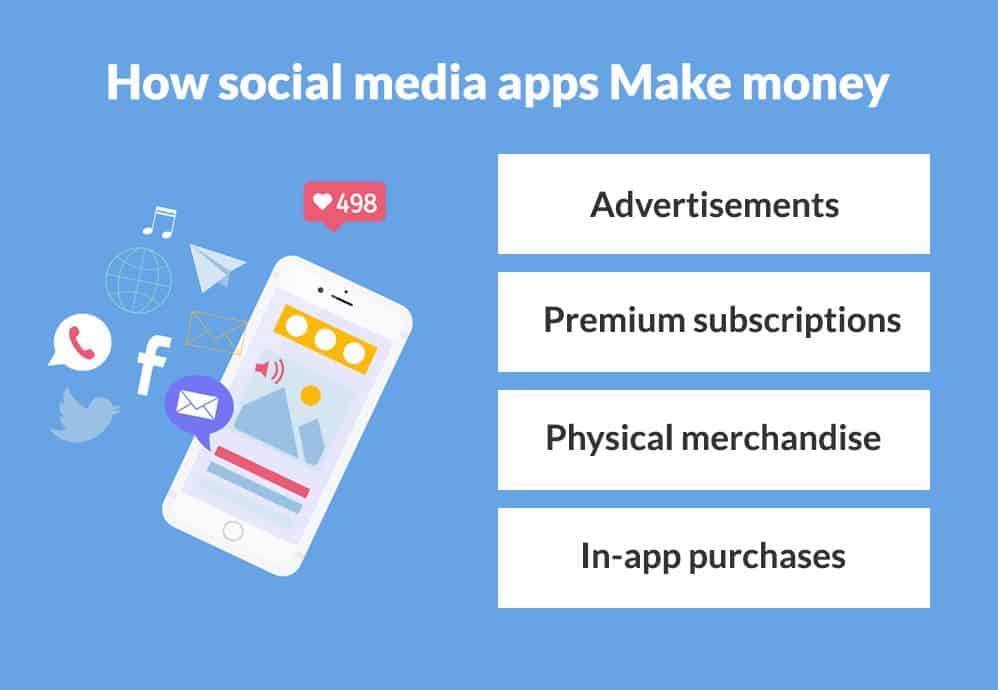
We saw how beneficial it is for businesses to create a social media app.
But you also have to think about how to make it profitable.
You are investing money into social media app development so you have to consider ways to generate revenue from it.
Popular monetization models are:
1. Advertisements
The most popular, the most used.
This is widely used by several existing platforms such as Instagram and Youtube.
But make sure that the advertisements are relevant and it doesn’t overwhelm users.
2. Premium Subscriptions
When your content has value, people will want more and will be ready to pay for it.
So along with offering good content for free, your app can have a provision to give exclusive, high-quality content that interested users can subscribe to.
3. Physical Merchandise
When your community is strong, people will be interested in purchasing cool merchandise that carries your brand image.
This can also act as a great marketing strategy, along with generating revenue.
4. In-App Purchases
Creating a provision for your community members to purchase digital products such as e-books or podcasts related to your niche is another good monetization strategy.
Quantitative Metrics for Social Media Applications
A significant aspect of having a social media application is that you can base your decisions on practical and real-time data.
There are several quantitative metrics that you can analyze to see how your social media application is performing.
And based on these metrics, you can take insightful future actions.
Quantitative metrics are numeric data based on mathematical analysis and statistics.
How does this help?
You are no longer making decisions based on assumptions or guesswork.
Your decisions are targeted to your audience, based on data analysis.
That improves the quality of your interactions with them and leads to fruitful results.
Now let’s take a look at some quantitative metrics for social media applications.
1. Engagement
Engagement is an important quantitative metric to measure the response of your audience towards your content.
This engagement could be the number of comments, likes, or bookmarks that your social media profile receives.
Engagement gives you a measure of whether your content interests your audience and makes them want to interact with your profile.
2. Amplification
Amplification refers to the rate at which your audience amplifies your content.
Depending on the platform, this can take different forms.
For example, in Instagram- amplification would be sharing a post, in Twitter- it would be retweeting a post, etc.
Amplification rate is a quantitative metric that tells you that the audience finds the information in your content valuable.
Amplification rate is crucial as it helps you to broaden your reach.
3. Followers
One of the most common metrics, the number of followers, is directly related to the growth of your social media application.
It is a metric that everyone notices.
However, it is essential to note that having a large number of followers is not always meaningful.
It is also vital to have active and quality followers.
4. Click Through Rate
If the aim of your social media application is to drive traffic to your website, then click-through rate is an important quantitative metric.
It refers to the number of times users click on the link that takes them to your website.
Upon analyzing this rate, it can be optimized to increase website traffic.
5. Active Timing
To get more engagement from your audience, it is ideal that you interact during the times your audience is active.
To check the active timing of your users, you can use several tools.
And from the received data, you can decide the time when you will post or share content.
How to Build a Social Media Application?
There are several solutions to create a social media application.
With the advancements in technology, even no-code development is possible to build a mobile application these days.
In this section, let’s take a look at four different ways in which you can build a social network application.
1. SaaS Solutions
SaaS Solutions are quick, simple, and secure.
Using SaaS platforms, you can build your own social media app on the web and mobile.
It provides easy customization, better access, and rapid development.
It also eliminates any need for hardware or software installations, maintenance, and updation.
2. Open Source Software
A widely used approach, open-source software provides more flexibility in terms of development.
It requires coding knowledge, so you would need a developer to create a social media app using this method.
It provides more options for customization but is expensive than SaaS solutions as it requires payment for domain hosting and developers.
3. Content Management System (CMS)
You can create a social media app using CMS platforms like WordPress or Drupal by integrating social network extensions.
These extensions or plugins are both free and paid and provide several options.
However, they might not always meet your custom requirements.
Further, this approach is better for social media websites than mobile apps.
4. Build from Scratch
If you have a unique idea that you want to bring to life, then the options discussed above cannot meet your needs.
Then, you have to build an app from scratch and to achieve this, you need the expertise of a mobile app development company.
This is a very effective approach; however, it is more expensive and requires more development time and effort.
Mindster is a top mobile app development company in USA and India that has years of experience in bringing several app ideas to life.
If you have a unique social media app development idea, get in touch with us and let’s discuss more!
- Android Development3
- Artificial Intelligence27
- Classified App3
- Custom App Development2
- Digital Transformation11
- Doctor Appointment Booking App13
- Dropshipping1
- Ecommerce Apps38
- Education Apps2
- Fintech-Apps35
- Fitness App2
- Flutter3
- Flutter Apps19
- Food Delivery App5
- Grocery App Development1
- Grocery Apps3
- Health Care7
- IoT2
- Loyalty Programs9
- Matrimony Apps1
- Microsoft1
- Mobile App Maintenance2
- Mobile Apps120
- Product Engineering5
- Progressive Web Apps1
- Saas Application2
- Shopify7
- Software Development1
- Taxi Booking Apps7
- Truck Booking App5
- UI UX Design8
- Uncategorized4
- Web App Development1









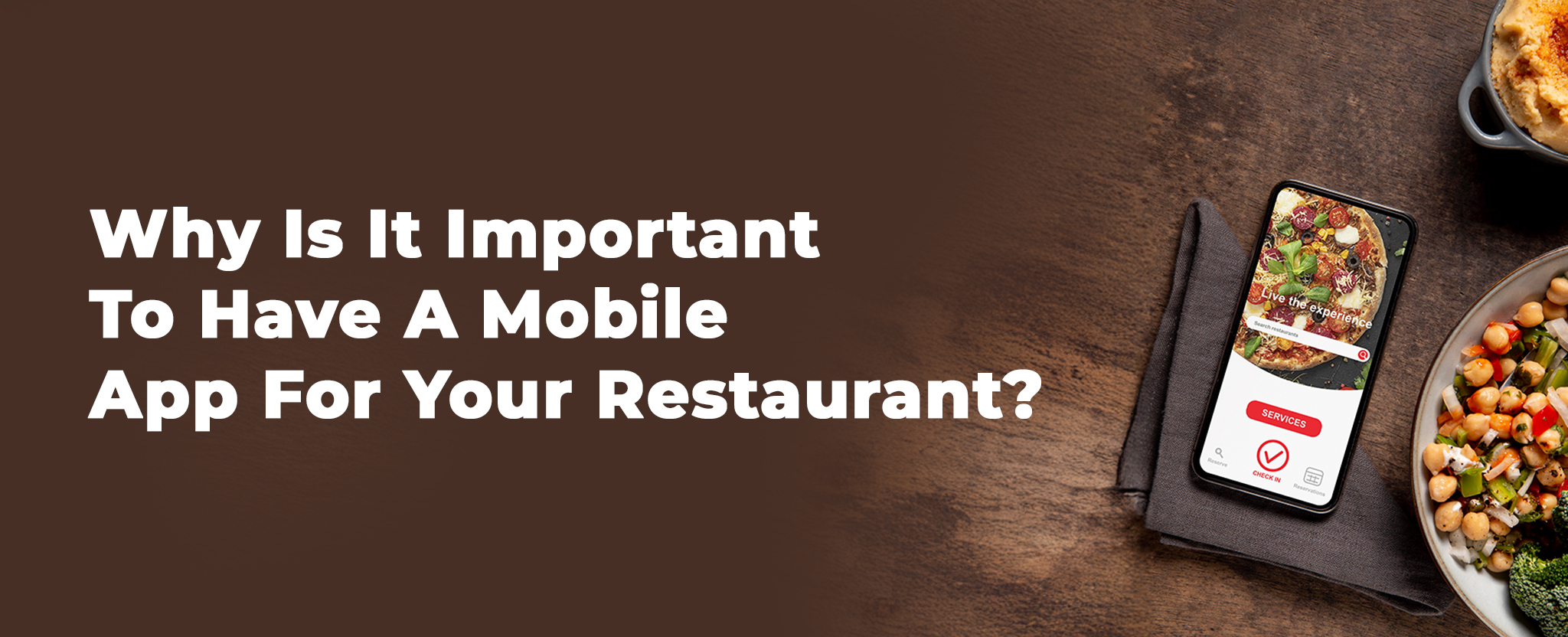
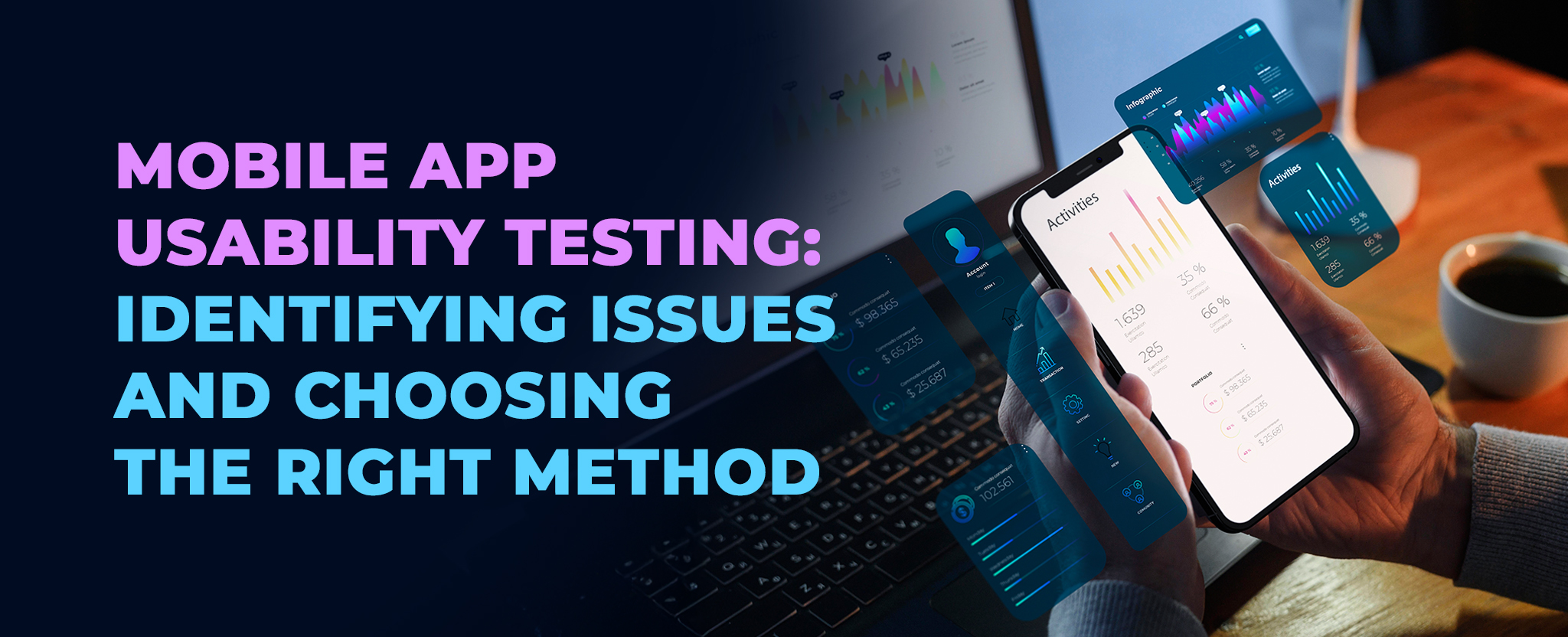

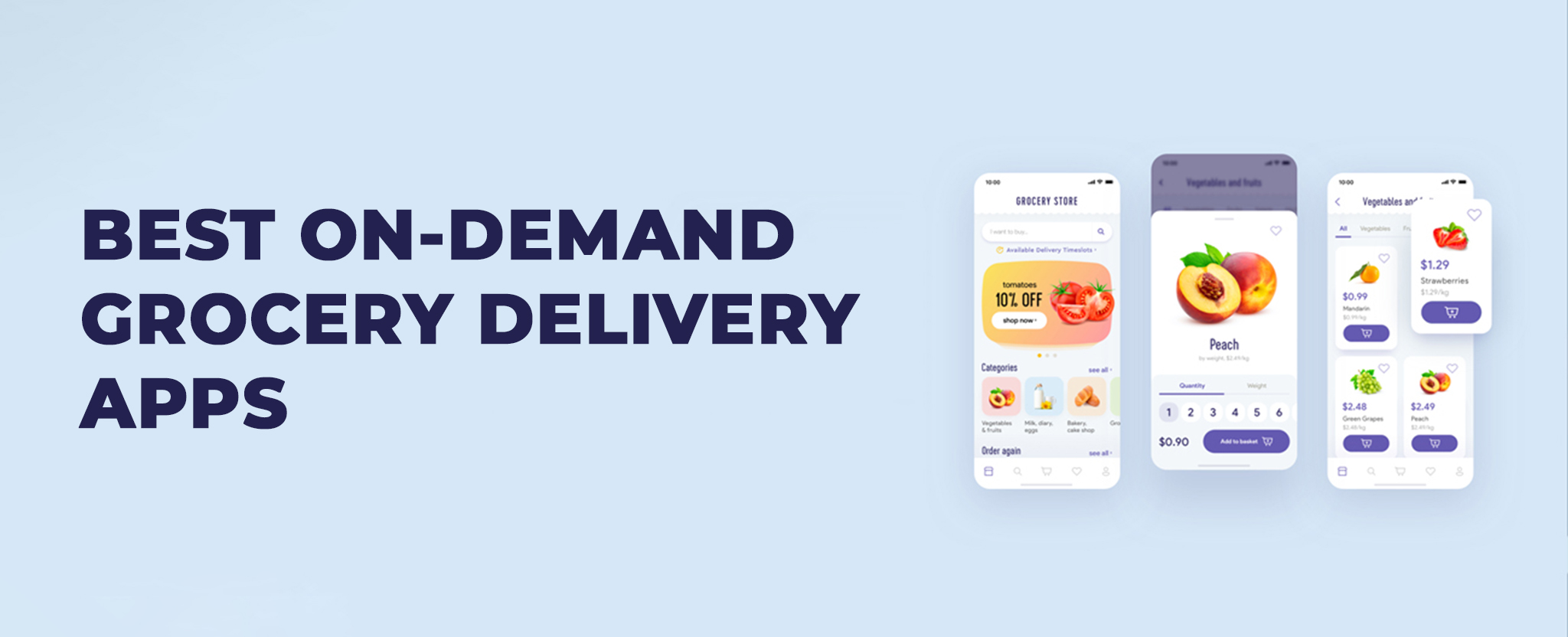






Comments